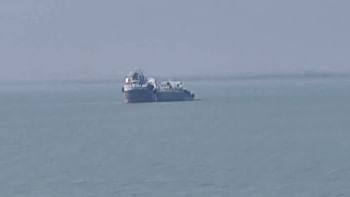The city of music

About an hours' drive away from bustling, busy Frankfurt is the modest city of Mannheim. While it may fly under the radar for the average traveller, a closer look yields a more dynamic picture of this small city.
A few years ago, while vacationing in Vienna, I came to fulfil a long-cherished dream of going to the opera. The Vienna Opera opened its grandiose, hallowed doors for me — but only so far. I formed a part of their "standing room only" audience; a one-and half hour-long wait and a seat-less, cordoned-off area at the farthest end, away from the stage greeted those, like myself, with not a lot of spending power. I'd say the performance that followed was spectacular, except the only recollections I have of it are aching feet and cramped muscles from standing for literal hours.

Fast-forward to the present day, when I finally managed my first seat — a real seat — at one of Germany's oldest opera houses, Nationaltheater Mannheim. Undistracted by any physical discomfort, I was free to enjoy Puccini's 'La Bohème' in all its splendour, followed by an orchestral performance of Carl Orff's Carmina Burana in the same week. Unlike the Wiener Staatsoper (the recipient of many an accusation of elitism), this was not a recreation exclusively for wealthy older folk. I was surrounded by teenagers and college students, no doubt taking advantage of the same student discount that I was. This was reason enough to fall in love with Mannheim, UNESCO's titleholder for "City of Music."
Mannheim also ranks as one of the most inventive cities of the world (according to Forbes magazine) and it's not hard to see why. This is where Karl Benz (founding father of Mercedes-Benz) built the world's very first automobile in the late nineteenth century. Consequently, it was on its streets that the first car was ever driven, and it became the starting point for the world's first road-trip by car, undertaken by Karl's wife, Bertha Benz. The world's first bicycle can also be credited to Mannheim, where Karl Drais, earlier on in the century, built a two-wheeled "draisine" — the precursor to the modern-day bike.
My celebration of Mannheim, however, lies less in its conception of our most commonly used transportation devices, and more in its invention of the delectable dessert, "Spaghetti Eis:" an ice cream dish made to look like a plate of spaghetti. Created in the '60s by the Eis Fontanella parlour, the sundae comprises of a whipped-cream base, topped with vanilla ice cream that has been squeezed through a chilled press to resemble noodles. The "noodles" are then topped with a strawberry coulis and thinly grated white chocolate, to give the appearance of marinara sauce and grated parmesan. It's a perfectly harmonised, delicious mix, and the overwhelming popularity of Spaghetti Eis — now a staple at any ice cream salon throughout the land — makes sense.
Another attraction of the city is the Barockschloss, erstwhile home of the German Prince Elector Karl Phillip. The architects of the eighteenth century palace had the lofty ambition of making it grander than the Palace of Versailles, and did so by installing exactly one more window than Versailles. Today, it forms part of the University of Mannheim — deemed "the Harvard of Germany."
It isn't surprising that Mannheim doesn't star in the average person's Europe bucket-list; it boasts neither of elaborate churches or museums, nor of any significant feature by way of nature. But if you're raring to go to the opera, are interested in seeing the most ornate university (located within a palace complete with ceiling frescoes and larger-than-life sculptures) and enjoying a spaghetti ice-cream delight, there simply is no other place to go.
Photo: Tonima Hossain


 For all latest news, follow The Daily Star's Google News channel.
For all latest news, follow The Daily Star's Google News channel. 



Comments